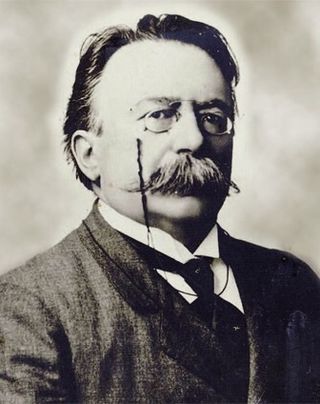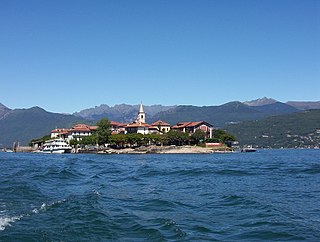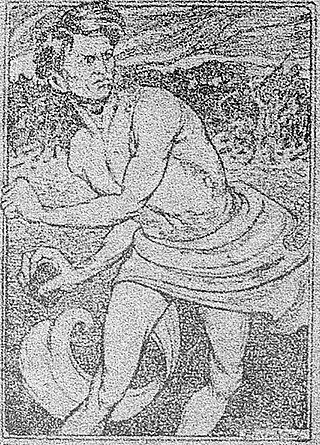Related Research Articles

Alceste De Ambris was an Italian journalist, socialist activist and syndicalist, considered one of the greatest representatives of revolutionary syndicalism in Italy.

Andrea Costa was an Italian politician who was initiated on September 25, 1883 to the Masonic Lodge "Rienzi" in Rome and progressively become 32nd-degree Mason and adjunctive Great Master of the Grande Oriente of Italy.

The Biennio Rosso was a two-year period, between 1919 and 1920, of intense social conflict in Italy, following the First World War. The revolutionary period was followed by the violent reaction of the fascist blackshirts militia and eventually by the March on Rome of Benito Mussolini in 1922.

San Giovanni in Persiceto is a comune (municipality) in the Metropolitan City of Bologna, in the Italian region of Emilia-Romagna.

The Fasci Siciliani, short for Fasci Siciliani dei Lavoratori, were a popular movement of democratic and socialist inspiration that arose in Sicily in the years between 1889 and 1894. The Fasci gained the support of the poorest and most exploited classes of the island by channeling their frustration and discontent into a coherent programme based on the establishment of new rights. Consisting of a jumble of traditionalist sentiment, religiosity, and socialist consciousness, the movement reached its apex in the summer of 1893, when new conditions were presented to the landowners and mine owners of Sicily concerning the renewal of sharecropping and rental contracts.

Filippo Turati was an Italian sociologist, criminologist, poet and socialist politician.

Unione Sindacale Italiana was an Italian anarcho-syndicalist trade union. It was the Italian section of the International Workers' Association, and the name of USI was also abbreviated as USI-AIT.

Isola dei Pescatori is an island in Lake Maggiore in northern Italy. As the most northerly of the three principal Borromean Islands it is also known as Isola Superiore and, with a population of 25 in 2018, it is the only one to be inhabited all year round. Unlike Isola Bella and Isola Madre, the island has never belonged to the Borromeo family.

The Primavalle fire was a political arson-attack that occurred in Rome in 1973. It resulted in the death of two people.
Italian anarchism as a movement began primarily from the influence of Mikhail Bakunin, Giuseppe Fanelli, and Errico Malatesta. Rooted in collectivist anarchism and social or socialist anarchism, it expanded to include illegalist individualist anarchism, mutualism, anarcho-syndicalism, and especially anarcho-communism. In fact, anarcho-communism first fully formed into its modern strain within the Italian section of the First International. Italian anarchism and Italian anarchists participated in the biennio rosso and survived Italian Fascism, with Italian anarchists significantly contributing to the Italian Resistance Movement. Platformism and insurrectionary anarchism were particularly common in Italian anarchism and continue to influence the movement today. The synthesist Italian Anarchist Federation appeared after the war, and autonomismo and operaismo especially influenced Italian anarchism in the second half of the 20th century.

Adolfo Orsi was an Italian industrialist, known for owning the Maserati automobile maker.
The Italian Workers' Party was a socialist political party in Italy.

Rosario Garibaldi Bosco was an Italian Republican-inspired socialist, politician and writer from Sicily. He was one of the leaders of the Fasci Siciliani, a popular movement of democratic and socialist inspiration in 1891-1894.

Giuseppe Montanari (1889–1976) was an Italian painter associated with the Novecento Italiano movement.

The Fasci d'Azione Rivoluzionaria was an Italian political movement founded in 1914 by Benito Mussolini, and active mainly in 1915. Sponsored by Alceste De Ambris, Mussolini, and Angelo Oliviero Olivetti, it was a pro-war movement aiming to promote Italian entry into World War I.
Sansepolcrismo is a term used to refer to the movement led by Benito Mussolini that preceded Fascism. The Sansepolcrismo takes its name from the rally organized by Mussolini at Piazza San Sepolcro in Milan on March 23, 1919, where he proclaimed the principles of Fasci Italiani di Combattimento, and then published them in Il Popolo d'Italia, on June 6, 1919, the newspaper he co-founded in November 1914 after leaving Avanti!
Osvaldo Gnocchi-Viani was an Italian journalist and a member of the First International. Later he entered mainstream democratic politics as a Socialist. He is known for his work in introducing chambers of labor into Italy.

Giovanni Noè was an Italian lawyer, anarchist and politician, involved in the Fasci Siciliani, a popular movement of democratic and socialist inspiration in 1891–1894. He was elected in Italian Chamber of Deputies in 1900 and 1904.

Olindo Vernocchi was an Italian politician, journalist and anti- fascist, national secretary of the Italian Socialist Party (PSI), member of the Constituent Assembly of Italy and president of the Istituto Luce.
The Workers' Hymn or Workers' Song, also known as the Hymn of the Italian Workers' Party, is an Italian socialist anthem written by Filippo Turati, and set to music by Amintore Galli.
References
- Maurizio Degl'Innocenti Geografia e istituzioni del socialismo italiano: 1892-1914 Napoli, Guida, 1983
- Paolo Favilli Storia del marxismo italiano. Dalle origini alla grande guerra Milano, Angeli, 1996
Notes
- ↑ Treccani - Alceste Luigi Faggioli